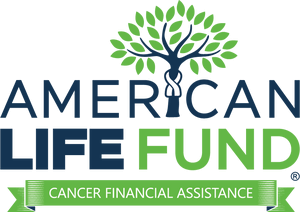Turn your life insurance policy into a lump sum cash payment to help cover cancer care costs, medical bills, and living expenses—without restrictions.
Cancer treatment is expensive. Medical bills, prescriptions, travel, specialist appointments, and ongoing care stack up quickly. Many cancer patients face financial burdens not because treatment is unavailable—but because it’s unaffordable.
A viatical settlement offers a direct solution to easing cancer treatment costs. It allows a life insurance policyholder to access a large lump sum cash payment from their life insurance policy while still alive. That money can be used immediately for cancer treatment, living expenses, or anything else that matters.
Unlike traditional financial assistance programs, a viatical settlement provides financial relief with no usage restrictions. Patients use the funds to afford cancer treatment, reduce out of pocket expenses, and take control of their care. Stop waiting and use your existing asset to ease the pressure today.
Get your free offer estimate from American Life Fund and erase cancer treatment costs today.
Covering Cancer Care Costs with Your Life Insurance Policy
Cancer care is expensive and constant. A single round of chemotherapy can cost $10,000 to $15,000. Targeted drugs often exceed $100,000 per year according to the National Cancer Institute. Radiation treatment runs $2,000 to $5,000 weekly. Outpatient scans, blood tests, and specialist consults can add $300 to $800 per visit.
Beyond treatment, daily costs build up. Many cancer patients pay $2,000 to $4,000 monthly for healthcare providers, transportation, food delivery, and basic living expenses. Missed work leads to income loss, while mortgage payments, rent, or utilities remain unchanged. Monthly payments don’t stop when treatment starts.
A large lump sum cash payment from a viatical settlement eases that pressure. Instead of patching bills with credit or depending on staggered benefits, families get immediate access to the cash value built from years of premium payments into a life insurance policy. That cash can cover both treatment and stability—without waiting on delayed reimbursements or restricted financial assistance programs.
Medical expenses don’t arrive gradually. Neither should financial support. The ability to act quickly with one clear payout makes it easier to handle rising cancer care costs and stay focused on recovery.
What Traditional Financial Support Leaves Out
Health insurance rarely pays the full cost of care. Coverage gaps appear immediately. A single infusion appointment may cost $6,000, yet the patient is still left with $2,000 to pay after coverage. Medication co-pays can exceed $1,500 monthly. Transportation for weekly appointments, accommodation near treatment centers, and child care support can drive household expenses over $3,000 per month.
Patients often apply to financial assistance programs, but most are capped between $500 and $2,000 and require waiting periods, income testing, or reapplication every quarter. Government programs provide additional support in theory, but payments often fall below actual costs. A housing voucher may cover part of rent, but not utilities. Meal services may be limited to select zip codes. Nonprofit organizations fill in some gaps, though access is based on region, diagnosis, and timing.
The outcome is inconsistent. One patient may receive partial aid for travel; another gets a gas card and nothing else. Neither receives help with recurring monthly payments or existing medical debt. Health insurance only responds to specific bills within the system. It does not address lost income, financial stress, or the real-world cost of navigating a cancer diagnosis.
Those who plan around a life insurance policy use its value strategically. The life insurance coverage no longer sits idle. It converts into usable cash—money that aligns with actual financial priorities and bypasses fragmented support.
Use your life insurance policy to fund your treatment, cover your living costs, and regain control of your care. Start your free estimate with American Life Fund now.
Using a Life Insurance Policy to Fund Cancer Care
A life insurance policyholder can access the value of their policy long before a payout would normally be triggered. Through a viatical settlement, that policy becomes a financial tool—delivering a one-time lump sum cash payment.
This is not a loan. There are no monthly repayments. The funds—known as viatical settlement proceeds—can be used to pay for treatment, stabilize living expenses, or address high-priority costs like transportation, private healthcare providers, or supportive care not covered by insurance.
This approach provides more than a cash surrender value, which is what the insurance company offers if the policy is voluntarily terminated. A viatical settlement also results in a higher payout than a traditional life settlement, especially when cancer is advanced and care needs are urgent.
The process is straightforward. The policyholder completes a simple application form that asks for basic medical and policy information. Upon verification and once eligibility is confirmed, an offer is presented to the policyholder. Once an offer is accepted and paperwork is signed and submitted, the policyholder receives a lump-sum, cash payment. In exchange, the purchaser of the policy becomes the new policy owner.
What a Lump Sum Enables
Having financial support is not just about paying bills—it’s about unlocking options. Many cancer patients limit care decisions based on what their insurance provider or plan deems acceptable. Health coverage might exclude certain specialists, facilities, or therapies that sit just outside the network. Some of the most promising clinical trials remain financially out of reach for patients without dedicated funding.
A lump sum payment changes that. With money in hand, individuals are no longer bound by what’s pre-approved. Instead, they can explore experimental treatment, pay for fast-tracked appointments, or relocate temporarily for better care. The viatical settlement process makes this possible by converting a life insurance policy into direct capital that can be deployed immediately—without restriction.
Funds are issued by a third party buyer, not an insurer. They assess the policy based on its terms, your health status, and the insured’s life expectancy. The result is a real payout that often exceeds life settlement proceeds, especially for individuals facing life threatening illnesses like cancer.
This funding covers household bills, transportation, equipment, and therapies that health insurance will not touch. While the American Cancer Society and similar organizations provide helpful guidance, their financial aid is limited. A viatical settlement becomes a financial lifeline—not a supplement, but a complete shift in how one can afford treatment.
For most, the tax implications are favorable. The majority of viatical settlements are typically tax free, but every situation is unique. Reviewing the offer with a financial professional ensures clarity and confidence when choosing how to use these financial resources.
Start the viatical settlement process with American Life Fund today and access a large lump sum payment to support the care decisions that matter most.
Frequently Asked Questions
Can I use a viatical settlement to pay for clinical trials or alternative treatments?
Yes. The payout can be used for anything, including clinical trials, travel to treatment centers, or therapies not covered by your health coverage.
Are viatical settlements typically tax free?
In most cases, yes. Viatical settlements are typically tax free under IRS guidelines, especially when the policyholder has a qualifying life threatening illness. Consult a tax professional for guidance on your specific situation and tax implications.
How is this different from a life settlement?
A life settlement is designed for policyholders not facing immediate health concerns. Life settlement proceeds are often lower and may carry taxes. Viatical settlements are based on medical urgency and often deliver higher, faster payouts.
Can this help with day-to-day expenses?
Absolutely. Viatical settlement funds can be used to cover household bills, medical costs, debt, and any area of financial hardship.





